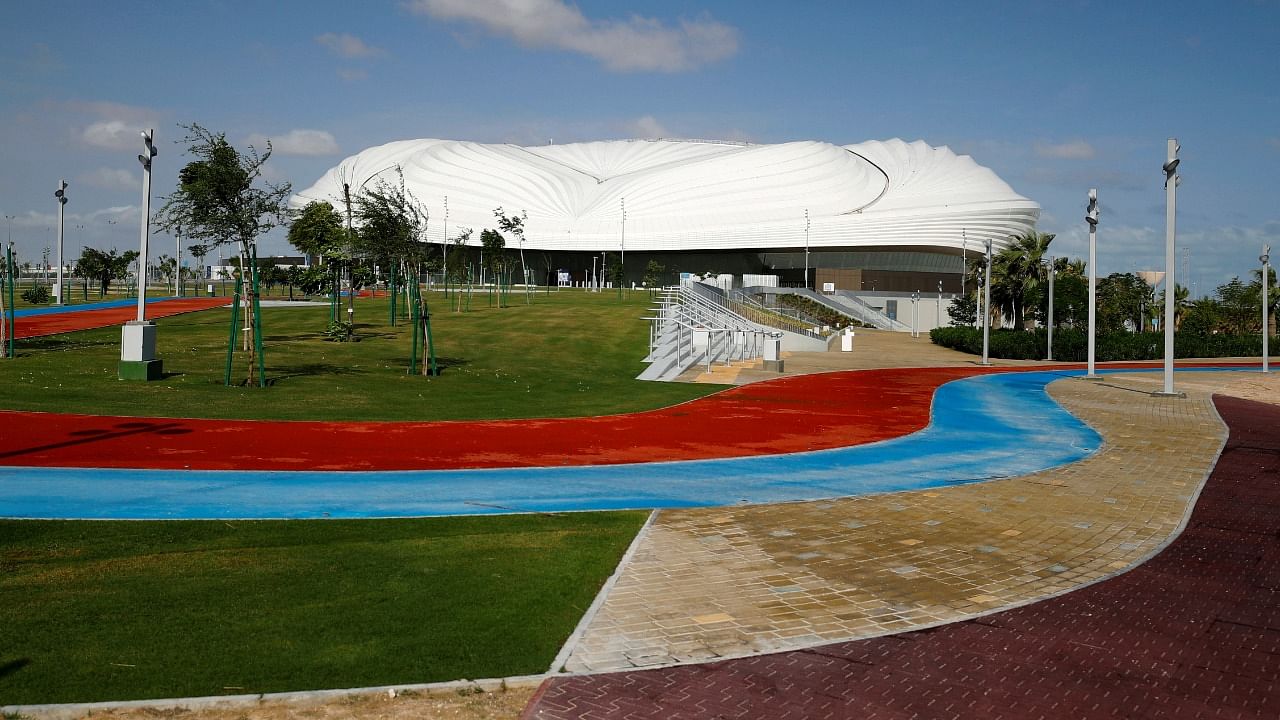
Exactly a year before it hosts the FIFA World Cup, Doha is criss-crossed with trenches and snarled with traffic as officials race to install a vital basic amenity -- adequate drainage.
Rainstorms are rare but paralysing in the Qatari capital, often causing floods and subsequently, gridlocks. With 1.2 million fans expected for the event next year, such disruption is to be avoided at all costs.
For taxi driver Mohamed, who is squeezing past construction sites in the downtown West Bay business district, the roadworks are a headache that he and his passengers could do without. "They weren't thinking 20 years ago when they did this (drainage system)," he said. "Customers don't like waiting."
Cruising down the corniche, an arcing highway with the West Bay view, is usually a Doha highlight but now, with excavations and gaggles of workmen, the city's main artery is strangled.
Journey times have multiplied and in the evening rush hour, cars sit in a giant traffic jam. Frustrations have bubbled over into rare criticism of officials on social media. "Doha has become a building site; we're driving in the middle of roadworks. And this is going to go on right up to the World Cup (next November and December)," said a young Qatari.
Watch the latest DH Videos here:
Annual rainfall is only about 75 millimetres (three inches) in the city but scenes of flooding are not uncommon, with cars semi-submerged, tunnels blocked and residents enjoying impromptu watersports.
"Many of Doha's roads were built without proper drainage. So whenever it rains, it floods," said a source briefed on the construction efforts. "They are now rushing to install drainage, even along roads that were finished."
World Cup chiefs have boasted that because of Qatar's compact size, the longest journey between any two of the eight tournament stadiums in and around Doha would be under 45 minutes. But gridlock would affect journey times, especially with the heavy influx of visitors -- some on hospitality packages that cost thousands of dollars for a single group game.
Qatar has earmarked 3.9 billion riyals ($1.07 billion) in the 2021 Budget for drainage and estuaries, compared to 3.2 billion riyals for highways.
"Development of drainage stations, water treatment plants, pumping and rainwater drainage networks in several regions to prevent flooding due to rain" are a priority in 2021, the Public Budget Statement said.
Qatar has spent billions of dollars on a new metro system that is used so far mainly by migrant workers from South Asia and the Philippines, with wealthier expatriates and Qataris sticking to large SUVs and luxury cars.
Also Read: 5 substitutes option in football to apply extended through 2022, to apply in next FIFA World Cup
Ashghal, the body in charge of public works, gave assurances that the main routes would be ready to link "the eight stadiums with a rapid road network that avoids any traffic jams for their users".
"These routes are also linked to metro and bus stations as well as commercial centres for World Cup fans," said Salem Al-Shawy, a deputy director of roadworks at Ashghal.
"We understand that drivers are suffering... but we want to make sure that this project will finish on time before the FIFA (World Cup)," he said.
In the meantime, Uber driver Mohammed, who comes from Bangladesh and has been living in Qatar for 15 years, is doing his best to keep his passengers happy. "Now, I warn them in advance and ask if they know a shortcut to avoid any unhappiness," he said.